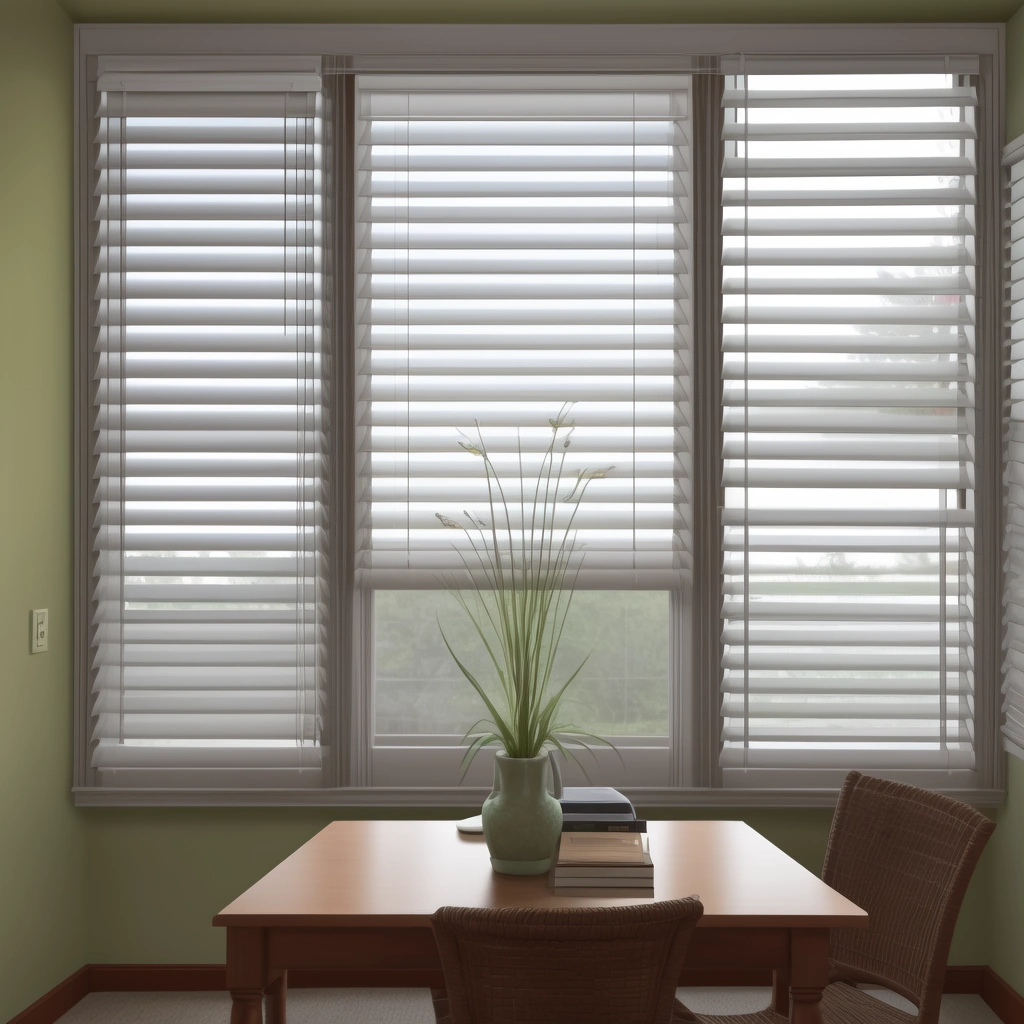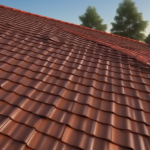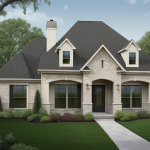The Best Window Treatments for Homes with New Siding: Choosing Blinds, Shades, and Shutters
A Fresh Start: Window Treatments After New Siding
The installation of new siding represents a significant investment in your home’s curb appeal and its resilience against the elements. However, the transformation isn’t truly complete until you consider the crucial role of window treatments. Often overlooked in the rush to finalize exterior renovations, selecting the right blinds, shades, or shutters can dramatically impact your home’s energy efficiency, privacy, and overall aesthetic, both inside and out. Think of window treatments as the jewelry that completes the outfit – they can either elevate the entire look or detract from it.
This article delves into the best window treatment options for homes with new siding, offering insights into how to make informed decisions that complement your recent renovation and enhance your home’s value. Beyond mere aesthetics, the synergy between new siding and updated window treatments presents a prime opportunity to address energy efficiency. According to the U.S. Department of Energy, windows account for a substantial portion of residential energy loss. By pairing your new siding with energy-efficient window coverings, such as cellular shades or insulated shutters, you can create a more thermally regulated environment, reducing your reliance on heating and cooling systems.
Imagine the long-term savings on your utility bills, all while contributing to a more sustainable lifestyle. This is particularly relevant in regions with extreme climates, where energy costs can quickly escalate. Furthermore, window treatments are paramount in controlling the level of privacy within your home. While new siding enhances your home’s exterior security, the right blinds, shades, or shutters offer an additional layer of protection from prying eyes. Consider the placement of your home and the proximity of neighboring properties when selecting your window coverings.
For instance, street-facing windows might benefit from privacy-enhancing options like layered shades or plantation shutters, which allow you to adjust the amount of light and visibility. Conversely, windows overlooking a private backyard might call for lighter, more transparent treatments that maximize natural light without compromising seclusion. The goal is to strike a balance between openness and security, creating a comfortable and inviting living space. Finally, remember that your choice of window treatments should harmonize with both your new siding and your existing interior décor.
The color, style, and texture of your blinds, shades, or shutters should complement the overall aesthetic of your home. For example, a modern farmhouse with board-and-batten siding might pair well with natural wood blinds or woven shades, while a contemporary home with sleek metal siding could benefit from minimalist roller shades or aluminum shutters. By carefully considering these factors, you can create a cohesive and visually appealing design that enhances your home’s curb appeal and reflects your personal style. Remember to consider how the light interacts with the chosen materials, as this can significantly impact the ambiance of your rooms.
Energy Efficiency: Blinds, Shades, and Shutters for Insulation
When new siding goes up, it’s an ideal time to consider energy-efficient window treatments. Windows are often a major source of heat loss in the winter and heat gain in the summer, essentially acting as thermal weak points in your home’s envelope. Selecting treatments that provide insulation can significantly reduce your energy bills and improve overall comfort. Cellular shades, also known as honeycomb shades, are excellent insulators due to their unique construction. They trap air in distinct pockets, creating a barrier against temperature fluctuations.
This design minimizes convective heat transfer, making them particularly effective in both summer and winter months. Similarly, insulated Roman shades offer a stylish and energy-efficient option, combining the elegance of traditional Roman shades with an added layer of insulating material. The effectiveness of window treatments for energy efficiency is often measured by their R-value, which indicates thermal resistance. While specific R-values vary by product and manufacturer, cellular shades generally offer higher R-values than standard blinds or shades.
For example, a double-celled shade can significantly outperform a single-celled option. Consider also the fit; a poorly fitted window treatment, regardless of its R-value, will allow air leakage and reduce its effectiveness. Professional installation can ensure a snug fit, maximizing energy savings. Beyond cellular and Roman shades, consider the material. Look for options with thermal linings or reflective backings to further enhance their insulating properties. For maximum light control and insulation, consider plantation shutters with adjustable louvers.
These allow you to fine-tune the amount of sunlight entering your home while providing a substantial layer of insulation. The density of the wood or composite material used in plantation shutters contributes to their insulating capabilities. Furthermore, the ability to tightly close the louvers creates a barrier against drafts. Real-world examples demonstrate the impact: homeowners in colder climates often report noticeable reductions in heating bills after installing energy-efficient window treatments in conjunction with new siding. Similarly, those in warmer climates experience lower cooling costs. Investing in energy-efficient window treatments is not just an aesthetic choice; it’s a practical home improvement that pays dividends over time, increasing both comfort and curb appeal.
Privacy Matters: Balancing Light and Seclusion
Privacy is a key consideration for many homeowners, especially those living in densely populated areas or those whose new siding project has brought their home’s exterior into sharper focus, potentially increasing visibility from the street. Window treatments offer a simple yet effective way to control the level of privacy in your home, acting as a customizable barrier against prying eyes. Blackout shades are an excellent choice for bedrooms or media rooms where complete darkness is desired, promoting better sleep and optimal viewing experiences.
These shades are designed to block out nearly all incoming light, ensuring maximum privacy and creating a sanctuary-like atmosphere, a feature particularly valuable in urban environments or homes situated close to neighbors. Choosing the right blackout shade material is also key; thicker, denser fabrics will provide superior light blockage and sound dampening, further enhancing privacy and comfort. For living areas or kitchens where some natural light is still desired, consider woven wood shades or privacy blinds.
These options provide a degree of privacy while still allowing some light to filter through, creating a warm and inviting ambiance. Woven wood shades, crafted from natural materials like bamboo or reeds, offer a textured and organic look that complements a variety of interior design styles, from bohemian to coastal. Privacy blinds, on the other hand, typically feature adjustable slats that allow you to control the amount of light and privacy with precision. When selecting blinds, consider the slat size and material; wider slats offer a more unobstructed view when open, while materials like wood or faux wood add a touch of elegance and durability, enhancing your home’s interior design.
Top-down, bottom-up shades are also a versatile choice, allowing you to lower the top portion of the shade while maintaining privacy on the bottom. This configuration is particularly useful in bathrooms or street-facing living rooms where you want to enjoy natural light without sacrificing privacy. The ability to customize the shade’s position allows for optimal light control and privacy management throughout the day. Beyond the functional benefits, consider the aesthetic impact of these shades. Available in a wide range of colors, fabrics, and textures, top-down, bottom-up shades can be seamlessly integrated into your existing interior design scheme, adding a touch of sophistication and functionality to your home. Coordinating the shade’s color with your new siding’s trim or accent colors can further enhance your home’s curb appeal and create a cohesive exterior aesthetic.
Aesthetic Harmony: Complementing Your Siding and Décor
The aesthetic appeal of your window treatments should complement both your new siding and your interior décor, creating a cohesive and visually pleasing effect that enhances your home’s curb appeal. Consider the style and color of your siding when selecting blinds, shades, or shutters. The goal is to find window treatments that harmonize with the exterior architecture while also reflecting your personal style inside. For example, if you have a modern home featuring sleek, minimalist siding like fiber cement in a cool gray tone, consider roller shades or Venetian blinds in neutral colors such as white, off-white, or light gray.
These options offer a clean and contemporary look that reinforces the modern aesthetic. Conversely, a traditional home with warm-toned vinyl siding might benefit from the addition of plantation shutters or Roman shades in complementary warm tones, such as cream, beige, or even a subtle floral pattern. These choices can add a touch of elegance and sophistication, softening the lines of the exterior while creating a welcoming interior space. Don’t be afraid to experiment with different textures and patterns to create a unique and personalized look that reflects your individual style and preferences.
Layering different types of window treatments can add depth and visual interest to a room. For instance, pairing sheer curtains with blackout shades allows you to control both light and privacy levels while adding a soft, romantic touch. The texture of woven wood shades can bring a natural, organic element into a space, complementing a home with wood siding or a nature-inspired interior design. When considering patterns, be mindful of the overall scale and complexity of the room.
A bold geometric pattern on Roman shades can make a statement in a minimalist space, while a subtle, textured fabric on draperies can add depth without overwhelming a more ornate room. Remember that your window treatments are an opportunity to express your personal style and create a space that feels both comfortable and visually appealing. Remember to consider the scale of your windows and the size of your rooms when choosing window treatments, as proportion is key to achieving a balanced and harmonious design.
Overly large or bulky treatments, such as heavy draperies or wide plantation shutters, can overwhelm a small space, making it feel cramped and claustrophobic. In contrast, too-small treatments, like narrow blinds or short shades, can look insignificant and out of place in a large room with expansive windows. For small rooms, opt for lighter, more streamlined options like roller shades or mini blinds, which allow plenty of natural light to filter through and create a sense of spaciousness.
In larger rooms, you can afford to be more generous with your window treatments, choosing floor-to-ceiling draperies or wide plantation shutters that add drama and sophistication. Ultimately, the goal is to select window treatments that are appropriately sized for your windows and your rooms, creating a balanced and visually appealing effect that enhances the overall design of your home. Furthermore, always consider how the window treatments will look from the outside of your home, ensuring they contribute positively to the overall curb appeal after the installation of your new siding. The best designs are cohesive inside and out.
The Final Touch: Completing Your Home’s Transformation
Choosing the right window treatments after installing new siding is an opportunity to elevate your home beyond mere functionality, transforming it into a cohesive statement of style and efficiency. By carefully considering your needs and preferences – balancing factors like natural light, insulation requirements, and street-side visibility – you can select blinds, shades, or shutters that perfectly complement your recent renovation and enhance your home’s curb appeal. This final step is crucial in harmonizing the exterior improvements with your interior design, creating a seamless transition that reflects your personal aesthetic.
Whether you prioritize energy savings, enhanced privacy, or a specific design style, a tailored window treatment solution awaits. Beyond the immediate aesthetic improvements, the selection of window treatments offers a practical opportunity to optimize your home’s energy performance. Consider, for instance, the impact of solar shades in mitigating heat gain during peak summer months, directly reducing your reliance on air conditioning and lowering energy bills. Similarly, well-insulated cellular shades can act as a thermal barrier during colder seasons, preventing heat from escaping through the windows.
Industry experts often recommend pairing new siding with upgraded window treatments as a holistic approach to home energy efficiency, maximizing the return on investment for both projects. Remember to factor in the solar heat coefficient and U-factor ratings of different window treatment materials to make an informed decision. Furthermore, integrating your window treatment choices with your overall interior design scheme can significantly enhance the perceived value and comfort of your living spaces. For homes with newly installed modern siding, sleek roller shades or minimalist Venetian blinds can maintain a clean, contemporary aesthetic.
Conversely, for more traditional homes, plantation shutters or Roman shades can add a touch of classic elegance. Don’t underestimate the power of color and texture to tie together the interior and exterior elements of your home. Coordinating the color palette of your window treatments with both your siding and interior décor can create a unified and visually appealing living environment. Take the time to research different options, compare prices, and consult with an interior design professional if needed. With a little planning and effort, you can transform your windows into a beautiful and functional feature of your home.


